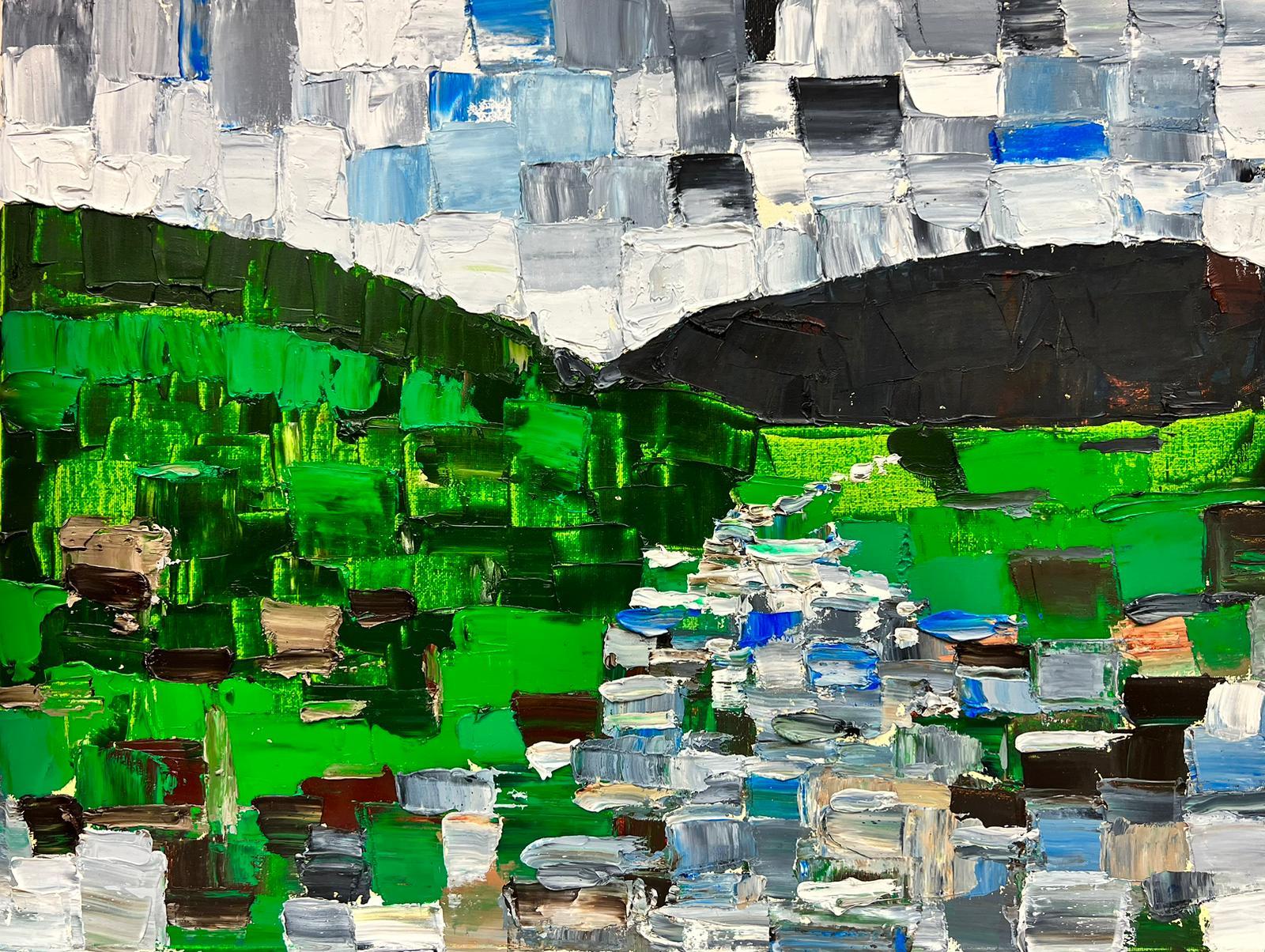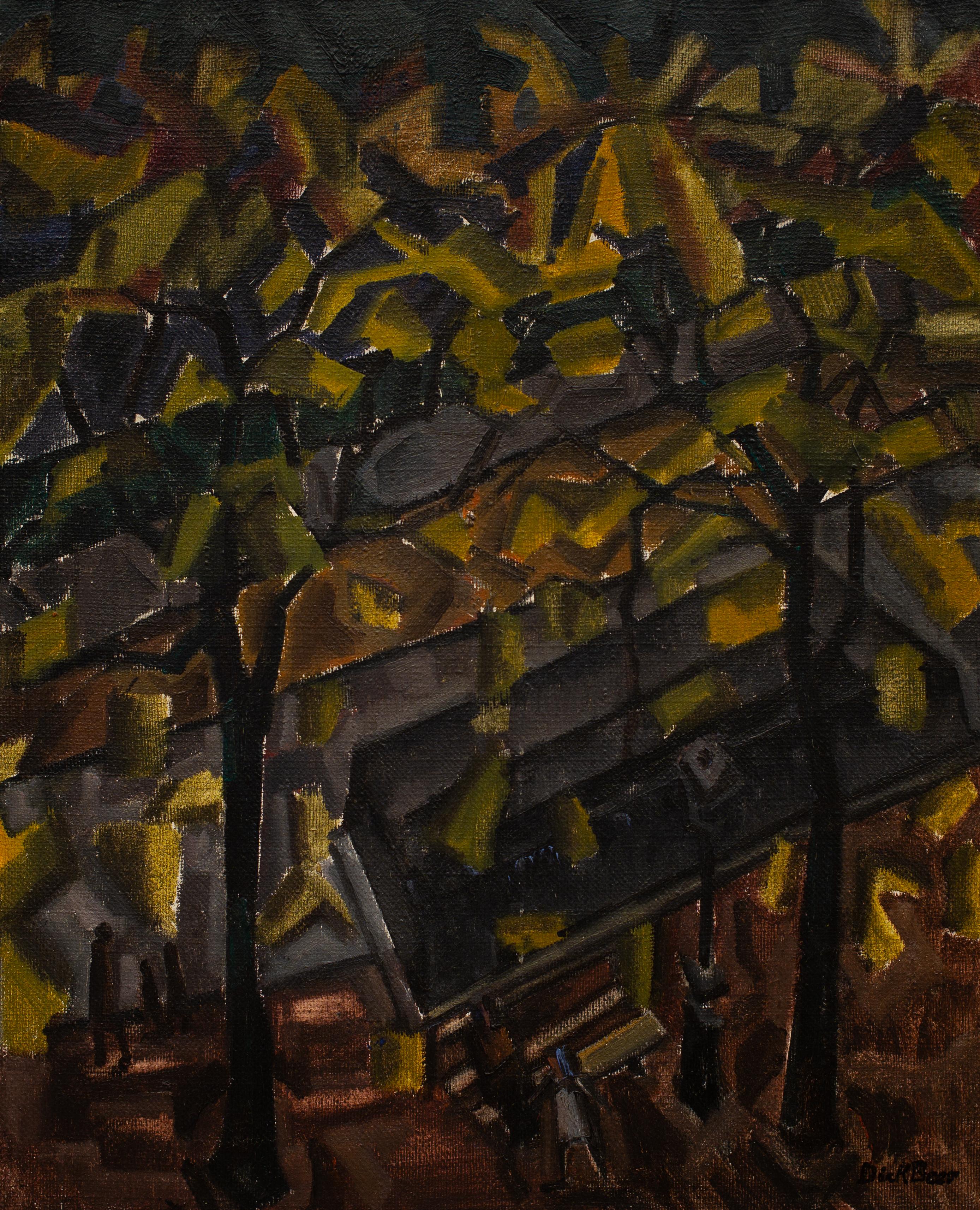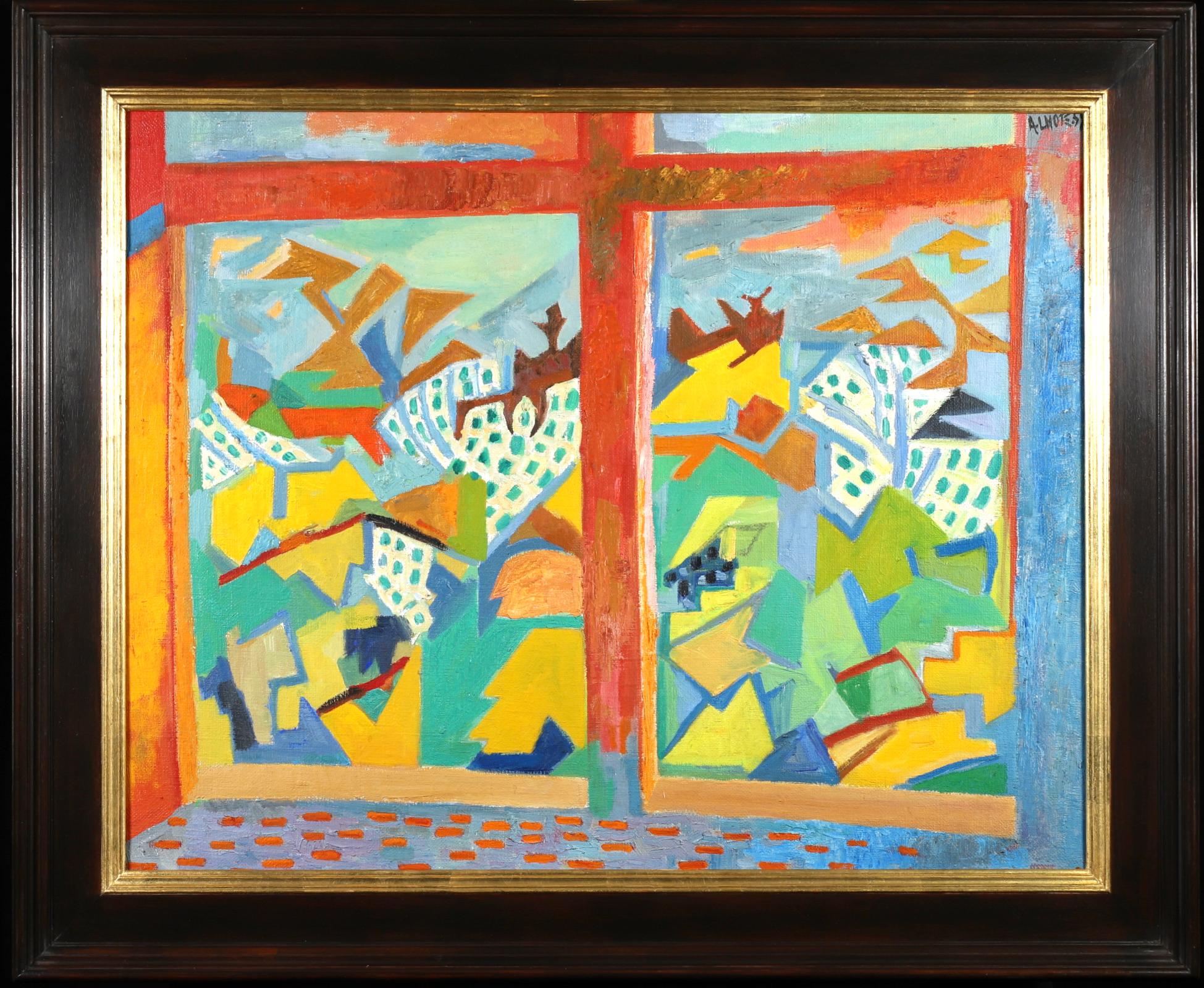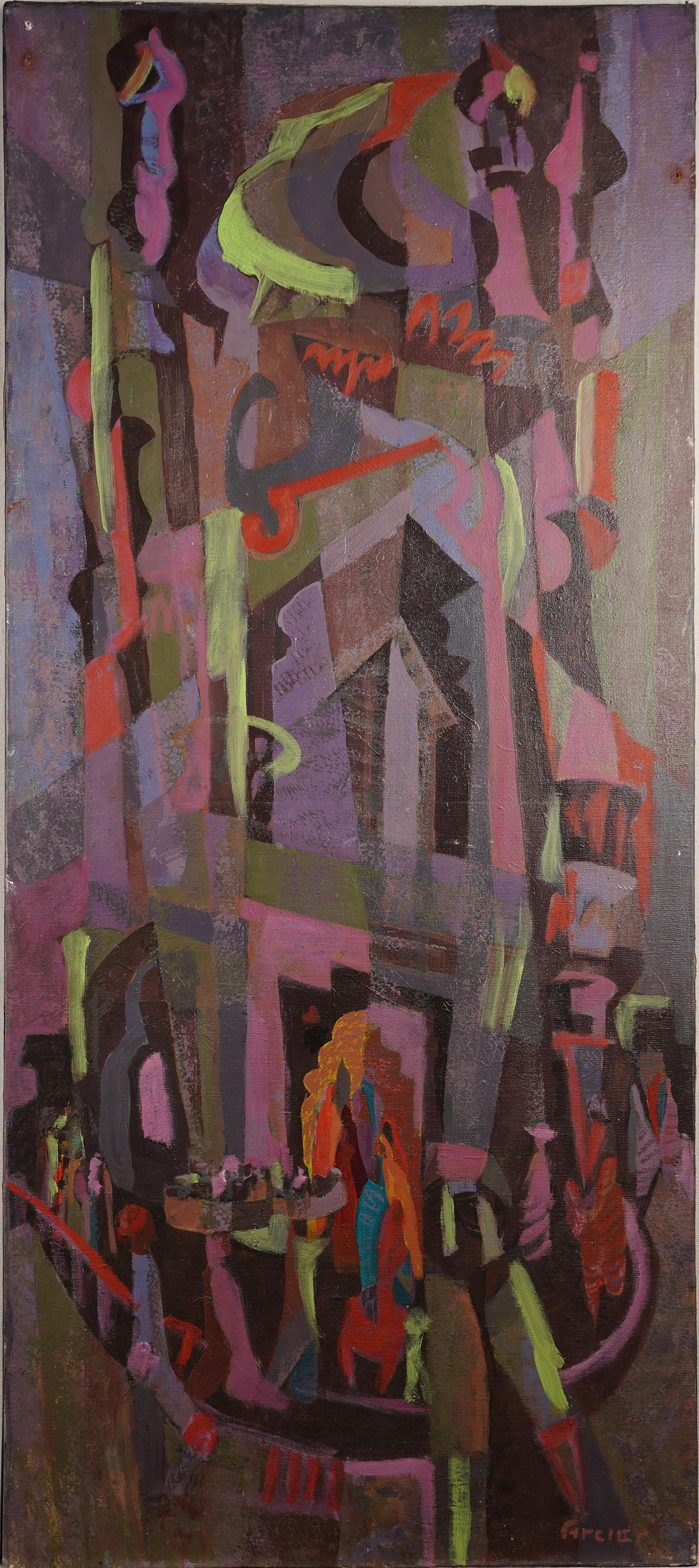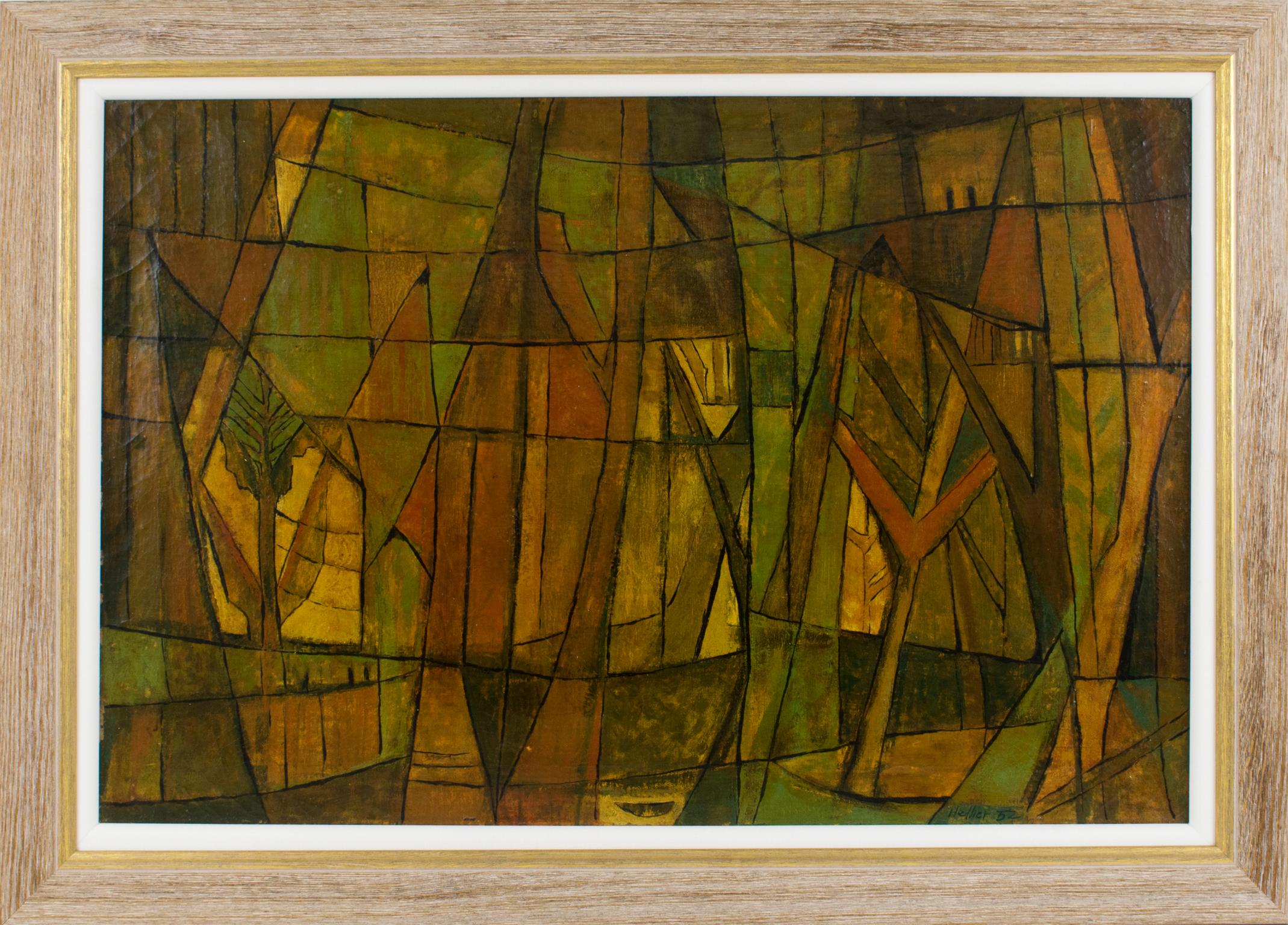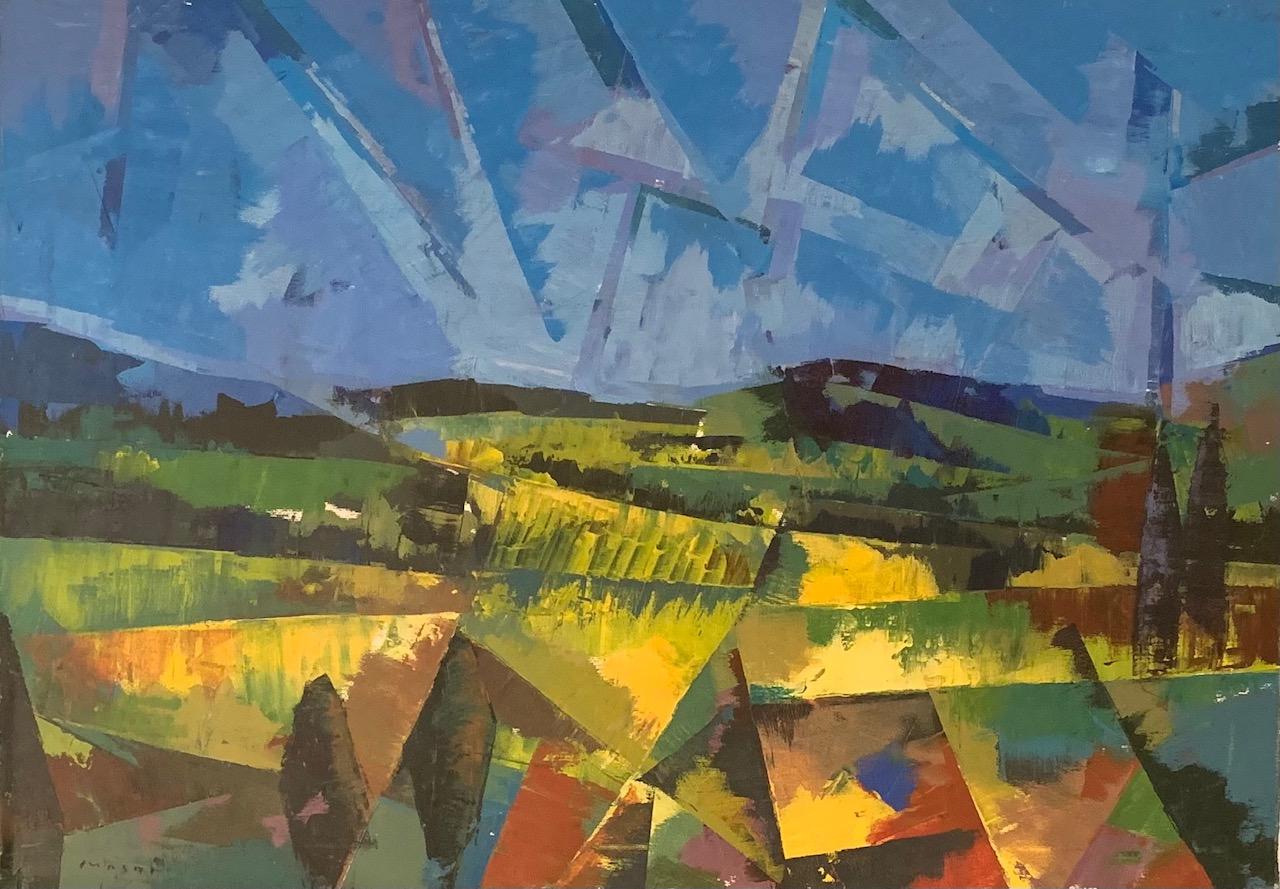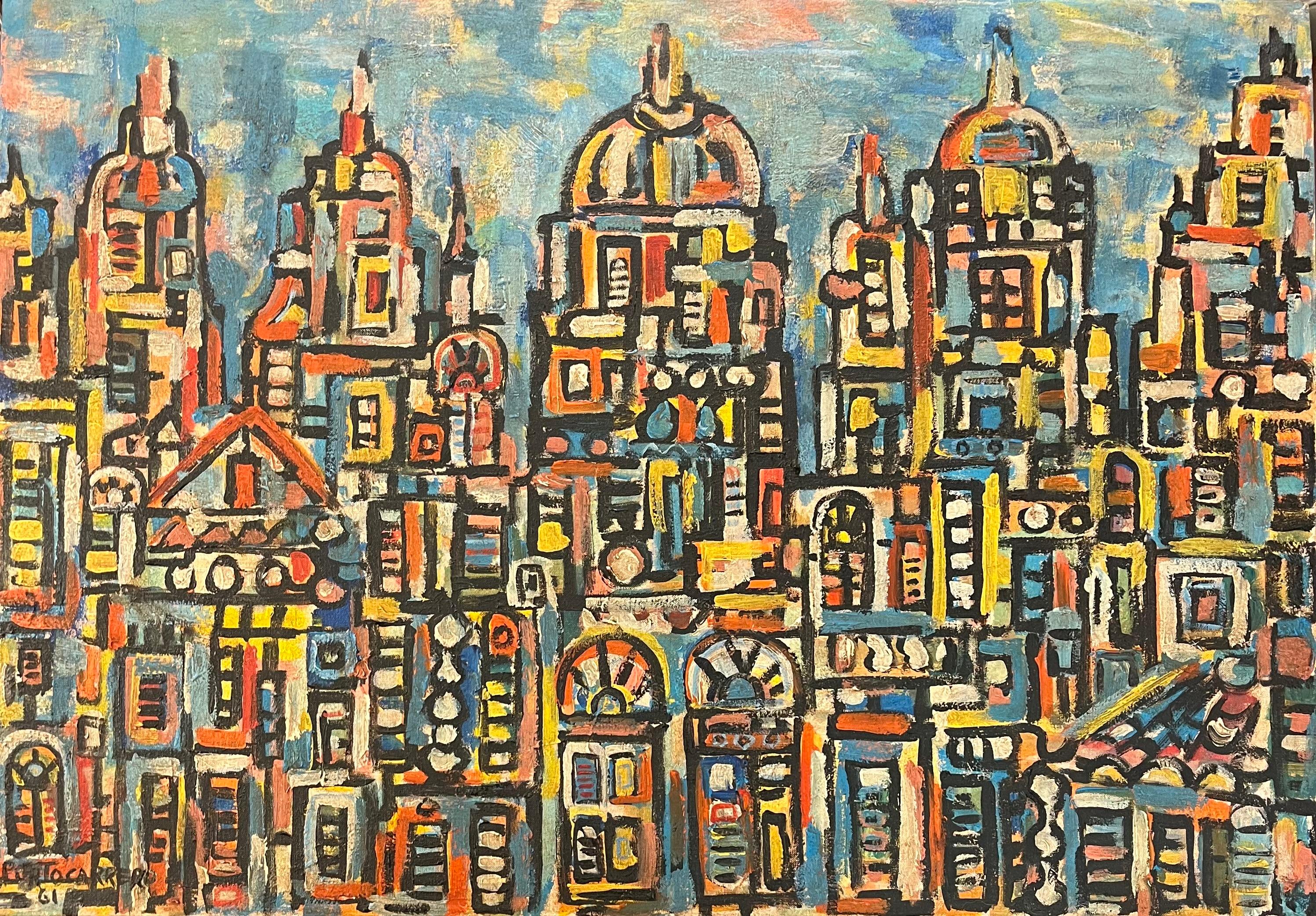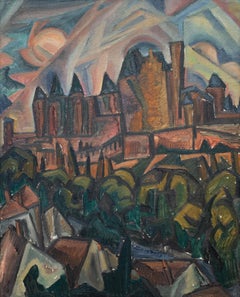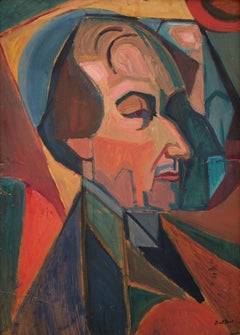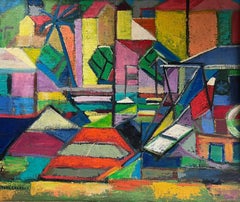
Cubist Painting By Swedish Artist Dick Beer, From the City of Pau, 1920
View Similar Items
Want more images or videos?
Request additional images or videos from the seller
1 of 9
Dick BeerCubist Painting By Swedish Artist Dick Beer, From the City of Pau, 19201920
1920
About the Item
About the Seller
5.0
Platinum Seller
These expertly vetted sellers are 1stDibs' most experienced sellers and are rated highest by our customers.
Established in 2020
1stDibs seller since 2020
118 sales on 1stDibs
Associations
International Confederation of Art and Antique Dealers' Associations
More From This SellerView All
- A Cubist French City, 1919Located in Stockholm, SEDick Beer (b. London 1893 - d. Stockholm 1938) A French City, 1919 (Fransk stad) oil on canvas canvas dimensions 82x66 cm frame 94x78.5 cm signed Dick ...Category
1910s Cubist Abstract Paintings
MaterialsCanvas, Oil
- Cubist Painting By Swedish Artist Dick Beer, View From a Window, 1920Located in Stockholm, SEDick Beer (b. London 1893 - d. Stockholm 1938) Utsikt från fönster, View From a Window, 1920 oil on canvas 73 x 60.5 cm stamp signed painted 1920 Exhibi...Category
1920s Cubist Abstract Paintings
MaterialsCanvas, Oil
$7,893 Sale Price20% Off - Cubist Painting from 1918-19, Portrait of Dr Mens IIILocated in Stockholm, SEDick Beer (b. London 1893 - d. Stockholm 1938) Portrait of Dr Mens III, 1918-1919 oil on board 70 x 50 cm stamp signed painted c. 1918-1919 Provenance: Within the family Beer until today Dick Beer (1893-1938) Dick Beer was born in London in 1893. His father, John Beer (1853-1906), was a Swedish painter from Stockholm who had a career mainly as a watercolour painter with motifs of horses from racetracks and fox hunts from the countryside. Barely fifteen years old, Dick Beer became an orphan and came to Sweden in 1907. Already in 1908-1909, he started at Althin's painting school in Stockholm. And later, at the Royal Academy of Arts from 1910-1912. His teachers were, among others, Gustaf Cederström, Oscar Björk and Alfred Bergström...Category
1910s Cubist Portrait Paintings
MaterialsOil, Board
- Spring Flood, 1930 by Swedish Racken Group Artist Gustaf FjæstadLocated in Stockholm, SEGustaf Fjaestad (Fjæstad) (1868-1948) Sweden Spring Flood 1930 oil on board signed and dated 30.4.30 unframed 22 x 36 cm framed 35 x 48.5 cm authenticated 1970 by his son Bo Fjæst...Category
1930s Symbolist Landscape Paintings
MaterialsOil, Board
- Vårvinter II (Winter, Early Spring II), Oil on Board, C. 1909Located in Stockholm, SEThe painting "Vårvinter II," believed to have been painted around 1909 by the Swedish artist Karl Tirén, is a remarkable representation of a landscape in the cusp of the seasonal tra...Category
Early 1900s Post-Impressionist Landscape Paintings
MaterialsBoard, Oil
- Twilight Serenity at Sea, Maritime Painting by Swedish Artist Per Linér, 1800sLocated in Stockholm, SEThis exquisite painting by Per Linér, a distinguished Swedish artist born in the 19th century, eloquently captures the serene maritime essence of what appears to be the Helsingborg region. The canvas is brought to life with a selection of ships that grace the calm waters, suggesting the vibrant trade and seafaring culture of the era. At the heart of the composition lies an island, crowned with modest yet intriguing buildings that hint at human habitation amidst the vastness of nature. Linér's masterful use of a soft, rosy hue in the sky evokes a time of day when the sun's final embers paint the heavens, offering viewers a moment of reflective tranquility. The painting's historical significance is matched by its visual splendor, making it a valuable addition to any collection of classic Scandinavian landscapes. This artwork not only showcases Linér's academic training in Stockholm and Germany but also his deep connection to the landscapes around him, which he chronicled with dedication throughout his career. oil on board signed with monogram PL...Category
Late 19th Century Realist Landscape Paintings
MaterialsOil, Board
You May Also Like
- "Tabac" Charles Green Shaw, Tobacco, Smoking, Park Ave Cubist, AAABy Charles Green ShawLocated in New York, NYCharles Green Shaw Tabac, circa 1935 Signed on the reverse Oil on canvasboard 5 3/4 x 8 3/4 inches Provenance: Washburn Gallery, New York, 1982 Private Collection (acquired from the above) Christie's, The Collector, October 20, 2021, Lot 307 Private Collection, Scarsdale, New York (acquired directly from the above) Literature: Hilton Kramer, "Charles Shaw: In the Minimal Tradition," New York Times, February 21, 1982, Section 2, p. 25. Charles Green Shaw was born in 1892 to a wealthy New York family. He lost both his parents at a very young age; his mother died when he was just three years old. Despite the early loss of his parents, Shaw lived the whimsical life of a New York socialite. As a beneficiary to an inheritance based in part upon the Woolworth fortune, he was brought up surrounded by the well-bred, well-groomed and well-moneyed citizens of New York’s elite social class. His social status as an adolescent was cultivated while spending summers in Newport and attending Christmas balls at Mrs. W.K. Vanderbilt’s. At age six, Shaw began to take an interest in drawing, and by nine, he was known to have a fondness for sketching historical costumes. After graduating from Yale University in 1914, Shaw spent a year studying at Columbia University’s School of Architecture. Subsequently he served for eighteen months as a Lieutenant in World War I. After his service, Shaw returned to New York and tried his hand as a businessman selling real estate, but his attempt was short lived. In the early 1920s, Shaw began his career as a journalist and novelist. He achieved professional success, writing consistently for magazines such as The New Yorker, Vanity Fair and The Smart Set. Shaw’s writing was a record of his approvals and disapprovals of the social crowd to which he belonged. His profession along with his social pedigree, brought him in contact with a number of the most significant figures of the 1920s such as, F. Scott Fitzgerald, Sinclair Lewis, George Gershwin, George Jean Nathan and the American artist George Luks. Some of his profiles included celebrity caricatures used as illustrations, these were the publics’ first look at Shaw’s artistic ability. In 1928, a collection of Shaw’s articles and interviews were published in one volume titled, The Low Down. Just previous to the stock market crash and the end of the Jazz Age, Shaw left New York and traveled to Paris and London. He arrived in Paris in 1929. In an autobiographical note Shaw suggests it was on this trip when he first began to paint seriously. London also acted as a great source of motivation for the budding artist. He began to sketch everyday in St. James’s Park, making large pastels of its vistas in the style of Cezanne. When he returned to New York in 1932, Shaw considered himself a painter. Success for Shaw came quickly with his first solo exhibition mounted at the Valentine Gallery in 1934. The following year Albert Eugene Gallatin included works by the artist in an unprecedented solo exhibition at his Gallery of Living Art at New York University. Shaw further cemented his reputation as an artist through his association and friendship with fellow abstract artists Morris and Gallatin. The trio soon was regarded as ‘the Park Avenue Cubists’. As a founding member of the American Abstract Artists, Shaw became an impassioned defender of the style. His 1938 essay in the American Abstract Artists yearbook, “A Word to the Objector”, acted as a defense against those who failed to see the illustrative quality of abstract art and scolded those who disregarded American artists as serious Abstractionists. He was also an influential force at the Museum of Modern Art, where he sat on the Advisory Board from 1936 to 1941. In the later years of Shaw’s life he continued to produce abstract paintings, yet in a more private manner. He was known to be a reserved man— a ‘gentleman’; not much is known about his personal life in these later years. During this time he maintained his career as a writer, publishing the well-known children’s book, It Looked Like Spilt Milk in 1940 and two books of poems in 1959 and 1962. In 1974, Shaw died...Category
1930s Cubist Landscape Paintings
MaterialsOil, Board
- Cubist British Expressionist Abstract Original Oil Painting River LandscapeBy Robert SomertonLocated in Cirencester, GloucestershireSuperb original abstract painting by the contemporary British abstract artist Robert Somerton, born 1972. Bold and vivid brushwork shapes all make up this highly unique and appeali...Category
2010s Cubist Abstract Paintings
MaterialsCanvas, Oil
- Huge 1950's French Cubist Sunny South of France Harbor Scene Signed Oil PaintingLocated in Cirencester, GloucestershireThe South of France mid 20th century by Marguerite Lacroux (French/ Swiss 1898-1972) signed oil on board, framed framed: 33.5 x 41 inches painting: 32 x 40 inches provenance: privat...Category
Mid-20th Century Cubist Abstract Paintings
MaterialsOil
- Sea Garden, Teresa Pemberton, Original Abstract Seascape Painting, Bright ArtBy Teresa PembertonLocated in Deddington, GBTeresa Pemberton Sea Garden Original Oil Painting Oil Paint on Canvas Size: H 100cm x W 100cm x D 3.5cm Sold Unframed Please note that in situ images are purely an indication of how ...Category
21st Century and Contemporary Cubist Abstract Paintings
MaterialsCanvas, Oil
- La fenetre a Meneaux - French Cubist Landscape Oil Painting by Andre LhoteBy André LhoteLocated in Marlow, BuckinghamshireSigned and dated oil on canvas landscape by French cubist painter André Lhote. The piece depicts a view of a mountainous landscape from a Mullion window - a decorative with a vertica...Category
1950s Cubist Landscape Paintings
MaterialsCanvas, Oil
- Huge Rare Vintage American School Cubist Abstract Pop Art Abstract Oil PaintingLocated in Buffalo, NYVintage signed large abstract oil painting. Oil on canvas. Signed.Category
1940s Cubist Landscape Paintings
MaterialsCanvas, Oil
$1,996 Sale Price20% Off
